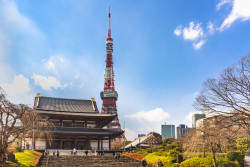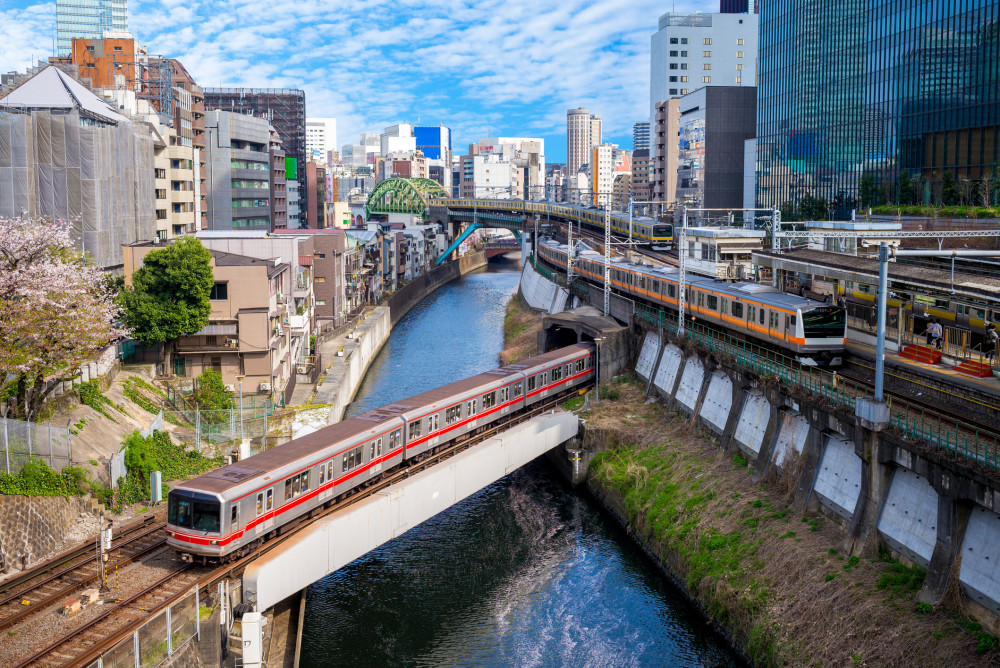
February 18, 2025
Mastering Train Etiquette in Japan: A Quiet Ride Through Culture
Your realistic guide to navigating Japan’s trains like a local
By following the unspoken rules of train etiquette in Japan, you’ll avoid potentially awkward missteps and also show respect for a peaceful transportation system that runs like clockwork.
This article will introduce these rules and guidelines, practical tips on when and how to apply them, and in what situations it’s appropriate to bend them. Think of this as a realistic guide: how flexible the expectations are, what’s actually considered mandatory, and when you can make your own judgment calls.
So picture this: it’s rush hour in Tokyo, and the train glides in with its usual precision. Inside, it’s quiet despite the packed crowd. No loud chatter, no blasting music—just the gentle hum of the train and the occasional announcements. What do you do (and don’t do) next?
Train Etiquette in Japan
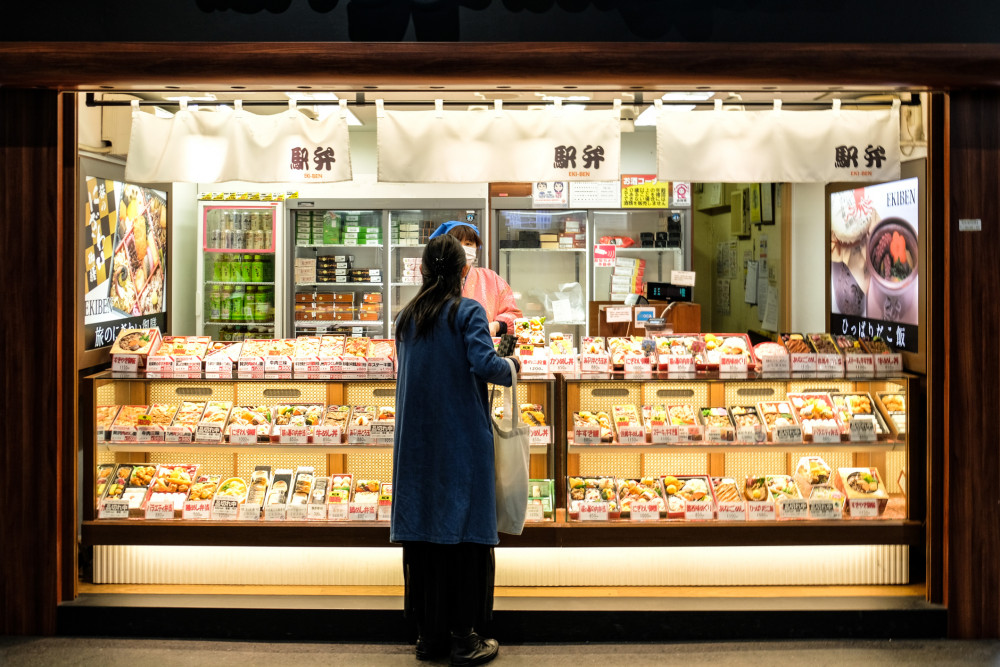
1. Skip the Snack Breaks On Subways
In Japan, local and subway lines aren’t usually the place for a coffee-and-donut combo. Eating and drinking are generally frowned upon on these train. However, bento and drinks are perfectly fine on a long-distance ride like the shinkansen. You’ll usually know if eating and drinking is allowed because there’ll be tables in the seat in front of you. There’ll also likely be bento stores on the platform itself, and even staff serving bento on the train ride. Please remember to take your trash with you at the end of your journey and place it in the trash cans on the train near the exit doors.
In reality, how strict is the no food on the subway rule? Well, I’ve seen people subtly popping candy into their mouths, or sipping on an iced latte, and nobody batted an eyelid. I personally feel comfortable taking sips of a bottled drink on the train before returning it to my bag.
On the extreme side of things, I once saw a man with an entire MacDonald meal on the subway. The albeit-delicious smell of French fries and a Big Mac was irritating enough to others that a lady let the takeout-brandishing deviant feel her vocal wrath.
In conclusion, it’s all about common sense. Are you going to pop a piece of gum into your mouth or are you going to whip out a curry-pan (curry bread) and fill the train carriage with the scent of curry, crunching breadcrumbs onto the shoulder of a salaryman’s freshly laundered suit? The former option is acceptable, the latter could be considered inconsiderate to others around you.
But what if I’m hungry, you ask? Most major stations have a convenience store inside the station, or right outside it, so you can hop off at the next stop and grab an onigiri (rice ball) if you’re that desperate.
2. Keep Conversations Quiet—or Silent
Japanese trains are usually quiet. Locals tend to keep their voices low or avoid conversations altogether. It contrasts the chatter-filled subway rides in New York or London. If you need to talk, keep it either brief or speak softly.
Still, it’s not always quiet—there’s a time and a place for everything. In reality, late-night subway trains on weekend nights will likely feel more lax. There’s usually gentle chatter going on here, and nobody minds because we collectively understand that many of us are now off work and having a pleasant evening out with friends. Late mornings, especially on weekends, are usually less silent too. During these times, there are less commuters and it’s more common for families with young kids to be out and about.
However, if you’re on the morning rush hour commute train to central Tokyo, use your judgment and read the room. At this time, we Tokyoites are snoozing, reading the news, staring quietly into the void and questioning our life choices… Please let us rest in peace.
The final thing to note here is that while your “normal volume” may seem acceptable to you, it might come across as “loud” to a Japanese person’s ear, who is more accustomed to very gentle speaking on the trains.
3. Phones on Silent, Calls Off the Table
Phone etiquette is big in Japan. Always switch your phone to silent mode and don’t take calls on the train. Instead, step off at the next station if it’s urgent.
While eating and talking can be done respectfully without raising too many eyebrows, making phone calls almost feels like crossing a line. Still, people know that there might be a need for exceptions. So, in the case that your call is a dire emergency and you simply can’t wait until the next stop, cover your mouth with your hand, keep your head and voice low so you’re not projecting across the carriage, and try to wrap it up as quickly as possible, or at least until the next stop. People around you will sense from your actions that you’re trying your best not to bother those around you, and will usually be understanding.
I would also let the person on the other line know that you’re on the train, so you can’t talk freely. This way, you can minimize the length of your conversation.
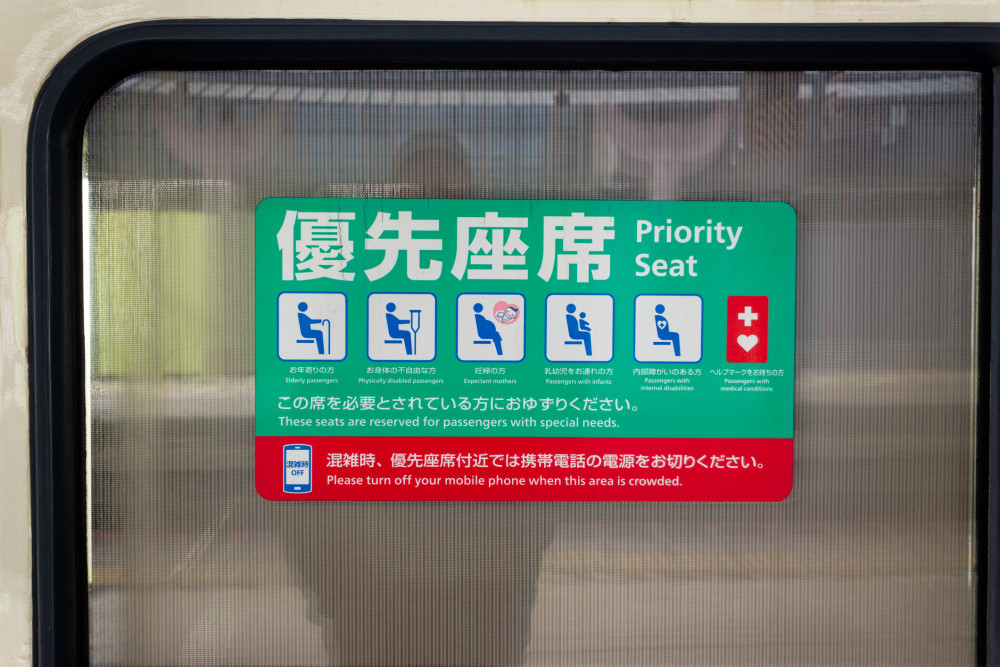
4. Respect the Priority Seats
If you’ve ever seen how commuters subtly glance around before taking one, you’ll notice how ingrained this cultural norm is. It’s all about thinking of others first.
Priority seats, often the end-of-carriage seats marked with a different color or a clear sign, are reserved for those who need them most. This includes the elderly, pregnant individuals, people with disabilities or mobility issues, and parents with small children. While it’s not illegal to sit in these seats, leaving them open or offering them up to someone who needs them is common courtesy.
So, can you ever sit in these seats if you don’t fall into the priority category? Yes! I usually sit in them if the main seats are getting full, but the train isn’t busy enough for me to anticipate that all the seats will be taken imminently anytime soon. If I ever sit in one, I’ll always hop up if someone who needs it more than me gets on the train. It’s no big deal. Plus, if I really want a seat, I can wait for the next train or transfer to a slower local line.
5. Bags and Space: Be Mindful
Space is a premium on Japanese subways, especially during rush hour. While the shinkansen has assigned seats, subways can get crowded, and it’s first-come-first-serve for a spot to sit. If you have a backpack, wear it in front of you or place it on the baggage racks above your head. If you have shopping bags (especially the rectangular ones with sharp edges) be mindful to hold them low below your waist instead of hoisting them up onto your shoulder and letting the corners dig into the sides of others around you.
Generally, don’t sprawl out across multiple seats, spread your legs wide or kick them out in front of you. Hold your bag in your lap or store it in the overhead storage rather than placing it on the seat beside you.
If you’re carrying oversized luggage, like suitcases or a snowboard, aim for the front or back of the car. These areas are sometimes less crowded and might have designated spaces for bigger bags. If there’s an option to take a slower local rather than a packed express train, you might be more comfortable waiting for that one instead.
6. Don’t Rush—But Do Line Up
Japanese train platforms are marvels of order. Lines form neatly where the train doors will stop, guided by painted markers on the ground. This system ensures everyone gets off smoothly first, then you can step on.
No pushing, no chaos—just pure efficiency, and everyone still gets to where they need to be at the end of it. If you’re not sure where to stand, follow the locals and stay inside the lines.
7. Small Gestures, Big Impact
A simple bow or a quick “sumimasen” (excuse me) when you accidentally bump someone can go a long way. And by bow, I don’t mean with your hands in a dramatic prayer in front of you and bending low to the ground. Rather, giving a slight nod with a subtle hint of a forward lean is more natural. These small acts of politeness reflect the respect embedded in Japanese culture and make for a better experience for everyone.
To clarify, if you accidentally brush shoulders with someone, “sumimasen” will suffice. If you crush a sandaled foot with your stiletto heel and they cry out in agony, you probably want to upgrade that to a “gomenasai” (I’m sorry).
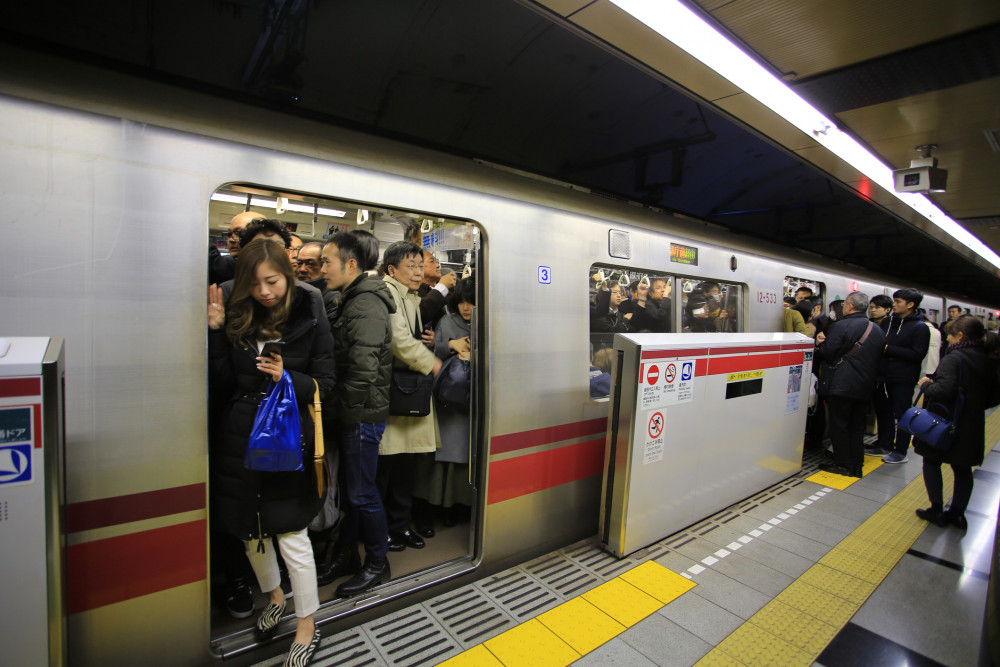
8. Getting onto a Busy Train in Japan
There’s an art to getting on, even when it looks impossible:
- First, wait for passengers to get off. Wait for others in front of you to get on, then slide one foot into the carriage. This signals to others that you are indeed getting on at this specific spot, and they’ll naturally shuffle back for you once they see you’re committed, filling into the remaining space inside the car.
- Then, pivot on your foot so you’re now facing the platform, and bring your second foot into the car (like the lady in the photo above).
- You might need to gently hold the doorframe to help you keep balance.
- Hold any bags in front of you and low to the ground, and avoid shoving those already on the car with your elbows or rear end; they will move back for you as they can clearly see you’re getting on—they don’t need your elbow in their ribs to encourage them to move it.
Note there are limits to this. If you see other local people on the platform also giving up getting on the train, then follow their lead. If they don’t think there is space, there really isn’t.
And don’t worry about those viral videos you’ve seen of train staff literally pushing people onto the train. In my humble opinion, this behavior is increasingly less common since the Covid-19 pandemic, and if you ever do see it happening and the thought of jumping into the thick of it makes you uncomfortable, simply head back to the street and take a bus or taxi instead.
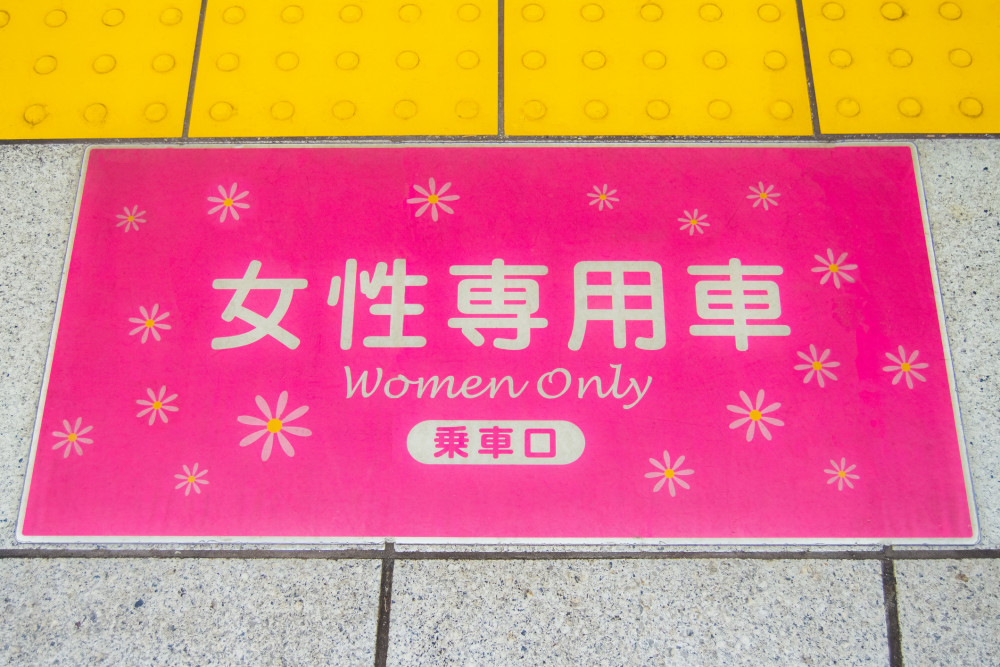
9. Women-Only Train Cars
Look for signs on the train doors or windows to check if a carriage is designated as women-only, and for which specifif hours. If you’re in doubt, watch to see who gets on! You might sometimes see platform security robots that stand at the point the women-only carriage starts. These cars are usually available during peak commuting hours on weekdays, with specific times and policies varying by railway company and region.
Exceptions are often made for young boys, individuals with disabilities, and their caregivers. Their use relies on passenger cooperation rather than legal enforcement. Don’t worry if you make a mistake and accidentally end up on the carriage, simply hop off at the next station and more to the adjacent carriage.
Additional Tips for Train Etiquette in Japan
- Keep music low. Even if you’re using headphones or earphones, if others can still hear your music on the train, it’s best to turn it down a notch.
- Keep body fragrances light. wearing perfume on trains is not prohibited, but it is considered polite to wear it sparingly. Strong scents can be bothersome in crowded spaces.
- Avoid blocking doors. Step aside when the train doors open to allow others to board or disembark smoothly. If it’s super busy, step off the train entirely, them embark again.
Final Thoughts on Train Etiquette in Japan
Navigating train etiquette in Japan isn’t just about getting from point A to point B—it’s a cultural experience. Plus, there’s something oddly meditative about the quiet hum of a Japanese train ride.
So next time you’re hopping on a train in Japan, leave the snacks in your bag, turn your phone to silent, and enjoy the ride. Just maybe not too loudly.
For more advice on life in Japan, check out our article: How to Use a Sento or Onsen in Japan.



